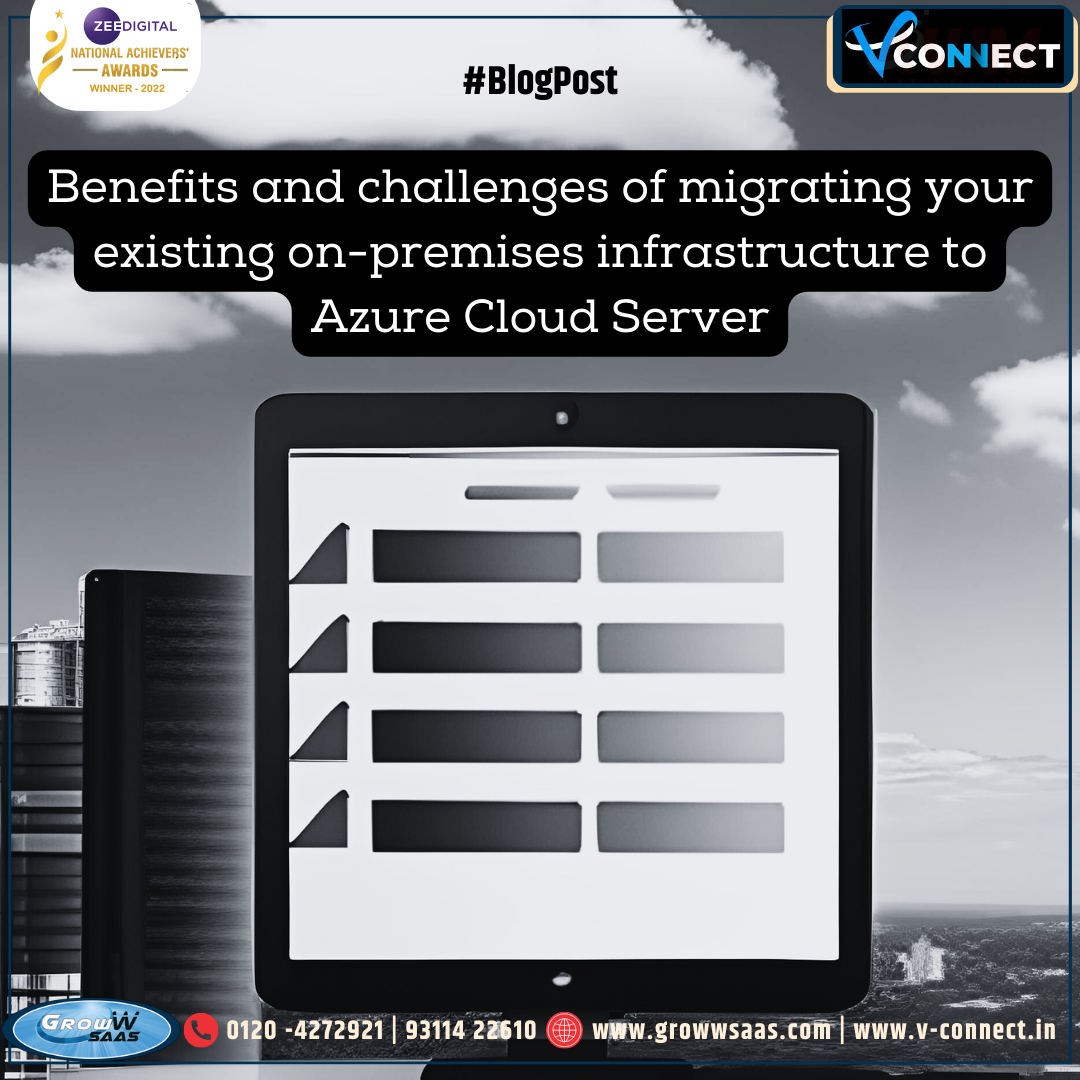Migrating to Azure Server is a process of moving your on-premises infrastructure to Azure, which is a cloud computing platform offered by Microsoft. This process involves several steps, including assessing your current environment, planning your migration, configuring your Azure environment, migrating your workloads, optimizing and securing your environment, and monitoring and managing your environment. Migrating on-premises infrastructure to Azure Cloud Server offers many benefits, including increased scalability, reliability, and flexibility. However, there are also some challenges involved in the migration process. Here are some benefits and challenges to consider, along with an outline of the migration process and tips for a successful migration.
Benefits of migrating to Azure Cloud Server:
- Scalability: Azure Cloud Server allows you to scale your resources up or down as needed, allowing you to quickly and easily respond to changing business needs.
- Reliability: Azure Cloud Server offers built-in redundancy and disaster recovery capabilities, helping to ensure that your applications and data are always available.
- Flexibility: With Azure Cloud Server, you can choose from a wide range of services and tools to build and deploy your applications, allowing you to customize your environment to meet your specific needs.
- Cost Savings: By migrating to Azure Cloud Server, you can reduce your hardware and infrastructure costs, as well as eliminate the need to maintain and upgrade your own hardware and software.
Challenges of migrating to Azure Cloud Server:
- Complexity: Migrating to Azure Cloud Server can be a complex process, particularly if you have a large and complex on-premises environment.
- Compatibility: Some applications and workloads may not be compatible with Azure Cloud Server, requiring additional configuration or customization.
- Security: Migrating to the cloud requires careful attention to security, particularly in terms of access control, data protection, and compliance with regulatory requirements.
Migration process and tips for a successful migration:
- Assess your current environment: Before migrating to Azure Cloud Server, it is important to assess your current environment to determine which workloads and applications are suitable for migration, and which may require additional configuration or customization.
- Plan your migration: Develop a migration plan that outlines the steps involved in the migration process, including any dependencies or prerequisites.
- Choose the right migration method: There are several migration methods available for migrating to Azure Cloud Server, including lift-and-shift, re-platforming, and refactoring. Choose the method that best suits your needs and resources.
- Configure your Azure environment: Set up your Azure environment, including creating your virtual network, storage, and compute resources.
- Migrate your workloads: Migrate your workloads to Azure Cloud Server, following your migration plan and method.
- Optimize and secure your environment: Once your workloads are migrated, optimize your environment for performance and cost, and ensure that your environment is secure and compliant with any regulatory requirements.
- Monitor and manage your environment: Monitor and manage your environment on an ongoing basis, using Azure tools and services to help optimize performance, manage costs, and ensure security.
In summary, migrating to Azure Cloud Server can offer many benefits, but it is important to carefully plan and execute the migration process to ensure a successful outcome. V-Connect Systems are Expert in Azure migration services where they migrate existing on-premises workloads and applications to the Azure cloud platform. V-Connect Azure Migration services are designed to simplify and streamline the migration process while reducing the risk of downtime and data loss. The services include Azure Migrate, Azure Site Recovery, Azure Database Migration Service, Azure Data Box, Azure Active Directory Connect, and Azure App Service Migration Assistant. Each service provides a unique set of features and benefits to help organizations migrate their workloads to Azure in a smooth and efficient manner. By using these services, organizations can take advantage of the scalability, flexibility, and cost savings of the Azure cloud platform.
